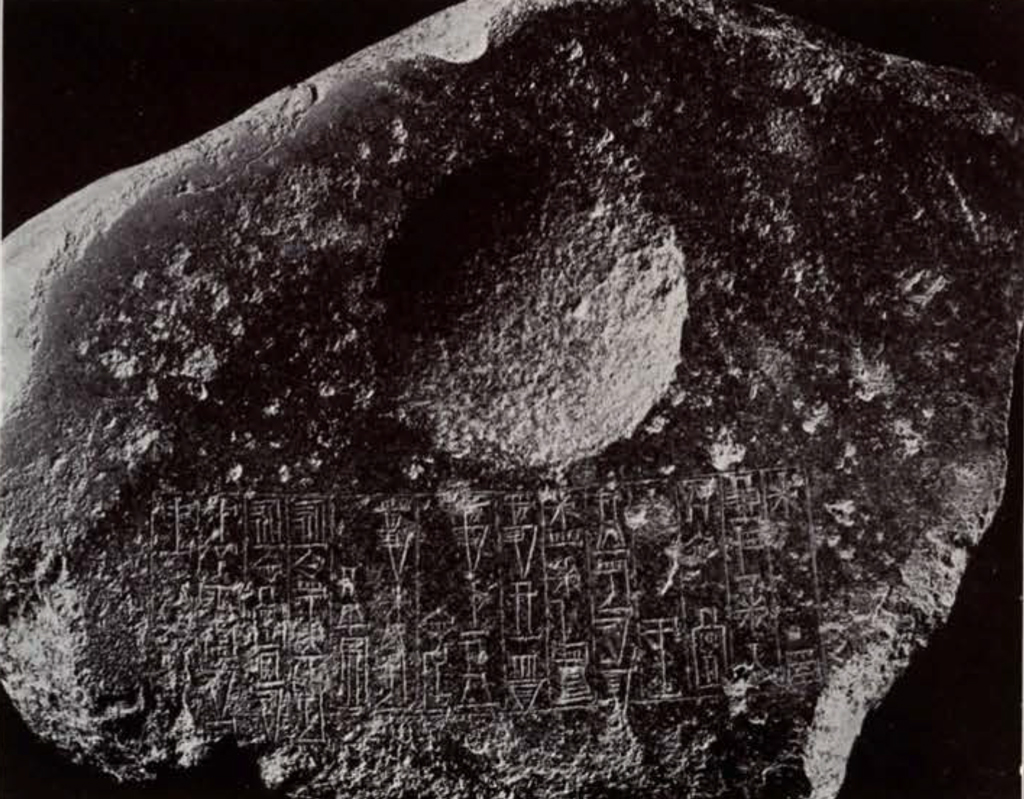Many temples, walls, stage towers and shrines of Babylonia were restored by order of the kings of Ur, B. C. 2304-2187. Their names and inscriptions are found on many bricks, clay nails, door sockets and stone tablets. Two door sockets from Nippur in gray diorite and black basalt have preserved good inscriptions of Dungi, the second king, and of Gimil Sin, the fourth king, of the third Ur dynasty. Their main interest is derived from their dedication to a certain god, their mention of a shrine or of a construction by its proper name descriptive of its qualities or attributions.

Museum Object Number: B14549
Dungi’s door socket, dedicated to Ninni-Ishtar, marked the building and restoration of the shrine of the tower of Nippur named E-dur-an-ki, the tower connecting heaven and earth. Gimil Sin’s door socket is dedicated to the god Shara, the beloved son on Ninni-Ishtar, and whom the king calls his father. His shrine has the common name of E-shaggi-padda, the elect of the heart.
nin-a-ni
dun-gi
nitah-kal-ga
lugal-uri k’ma
lugal ki-en-gi ki-uri-ge
é dur-an-ki ka-ni
mu-na-dū
ki-bi mu-na-gí
nam-ti(I)-la-ni šú
a-mu-na-ru
his lady,
Dungi
the powerful hero,
king of Ur,
king of Sumer and Akkad.
has built
her house of Duranki;
has restored it to its place;
for his life
he has dedicated it to her.
Hammurabi three centuries later mentions in the prologue of the Code how he took good care of Nippur and of Duranki, the temple of Enlil was also called É-kur, the mount house. Duranki is the stage tower rising its ponderous mass over the walls of the inner court. The name means the construction connecting heaven and earth: rikis shamê u irsiti. Nippur like Babylon could boast of her tower reaching unto heaven, which answers to the role played in Sumerian cosmology by the mountains as support of the sky.
The name of Dungi is written without the star, the divine prefix which the king adopted in the later part of his reign when he was considered and worshiped as a god. The restoration of the shrine and stage tower of Nippur must have taken place in the first years of the reign about B.C. 2275.

Museum Object Number: B14550
Gimil-Sin’s door socket.
nir-gál-an-na
dumu ki-ág
dninni
ad-da-ni-ir
dGimil lSin
lugal kal-ga
lugal urí kíma
lugal an-ub-da-tab-tab-ba-ge
é ša(g)-gí pa(d)-da
é ki-ág-gà-ni
nam-ti(l)-la-ni šú
mu-na-[ dū ]
the hero of Anu,
the beloved son
of Ninni,
his father,
Gimil-Sin
the powerful king,
king of Ur,
king of the four regions of the world,é
the é-shaggi-padda,
his beloved shrine,
for his life,
he has built to him.
Shara, a male deity, was with the goddess Nidaba, goddess of wheat and barley, one of the patron gods of the city of Umma, 50 miles south of Nippur. His relation to great Ninni-Ishtar is interesting. Umma, and her old rival Lagash had their days of splendor in earlier times. Ningirsu of Lagash is also a minor god, a servant of the great Enlil of Nippur. Such minor gods were anyhow invoked as personal gods and patrons of kings and patesi, and interceded for them before the dii majores. There are several instances of such a patronage, and scenes of introduction are common on seals and bas reliefs.

